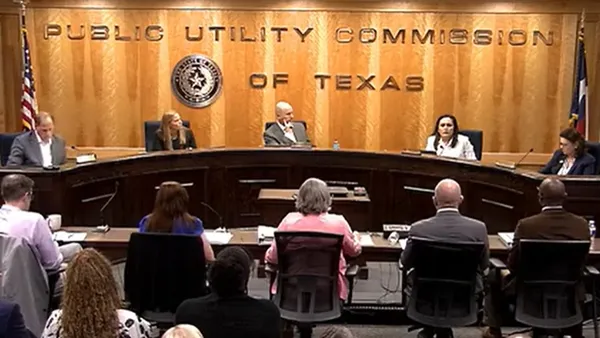Dive Brief:
-
U.S. carbon dioxide emissions have fallen to their lowest levels in 25 years, according to the Department of Energy (DOE).
-
In its Short-Term Energy Outlook, the DOE’s Energy Information Administration (EIA) reported that U.S. energy-related CO2 emissions totaled 2,530 million metric tons in the first six months of 2016, the lowest level for the first six months of the year since 1991. The agency projects that energy-related CO2 emissions will fall to 5,179 million metric tons in 2016, the lowest annual level since 1992.
-
The EIA cited mild weather and changes in the nation’s energy consumption: coal consumption fell 18%, natural gas consumption fell 1%, while the consumption of renewable resources rose 9%.
Dive Insight:
Low natural gas prices have tilted the U.S. power generation fuel mix toward gas and away from coal. Natural gas emits about half as much CO2 when burned as does coal.
The EIA now forecasts that 2016 will be the first year in which gas-fired generation will exceed coal generation. Gas- and coal-fired generation were just about equal in 2015.
Additionally, the U.S. had the fewest heating degree days since at least 1949, which reduces demand for fuels and electricity. Overall primary energy consumption was down 2% compared with the first six months of 2015, and primary consumption in the residential and electric power sectors declined 9% and 3%, respectively.
Consumption of renewable resources rose in the first six months of the year with wind energy rising the most, accounting for nearly half of the 9% increase.
Hydroelectric power consumption, which has rebounded since the easing of the Western drought, accounted for 35% of the increase in renewables consumption. Solar energy accounted for 13% of the increase, and the EIA expects it will account for the largest capacity additions of any fuel in 2016.
As beneficial as the rise of gas-fired generation has been to date for CO2 emissions, there are concerns. The EIA in August reported that CO2 emissions from natural gas associated with the energy sector will exceed those from coal for the first time since 1972. And scientists say the U.S. is reaching a limit on how much gas-fired generation it can build if it wants to meet the Paris climate goals.














